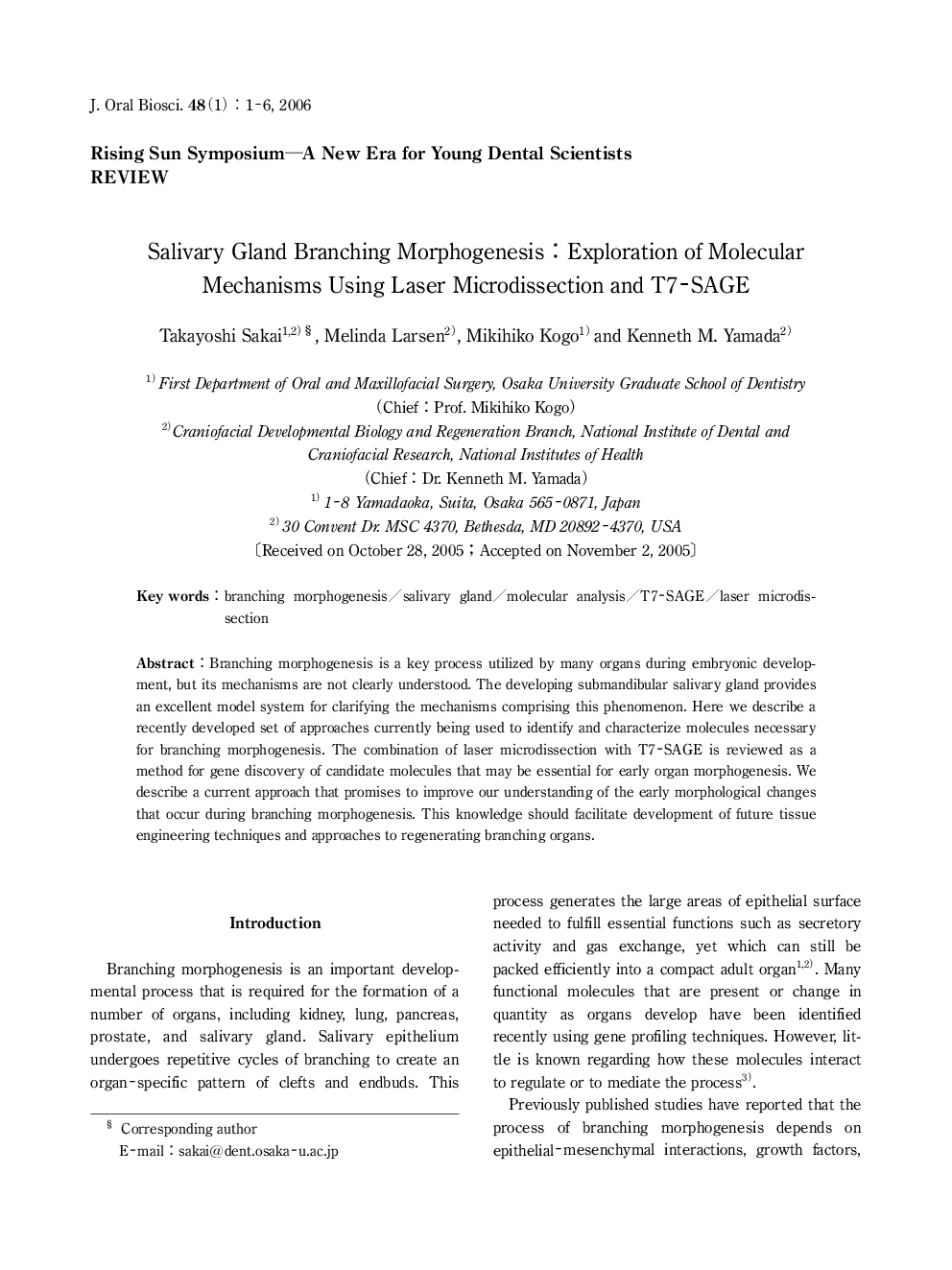| Article ID | Journal | Published Year | Pages | File Type |
|---|---|---|---|---|
| 2777141 | Journal of Oral Biosciences | 2006 | 6 Pages |
Branching morphogenesis is a key process utilized by many organs during embryonic development, but its mechanisms are not clearly understood. The developing submandibular salivary gland provides an excellent model system for clarifying the mechanisms comprising this phenomenon. Here we describe a recently developed set of approaches currently being used to identify and characterize molecules necessary for branching morphogenesis. The combination of laser microdissection with T7-SAGE is reviewed as a method for gene discovery of candidate molecules that may be essential for early organ morphogenesis. We describe a current approach that promises to improve our understanding of the early morphological changes that occur during branching morphogenesis. This knowledge should facilitate development of future tissue engineering techniques and approaches to regenerating branching organs.
